How I Plan To Run 100 Miles Training Three Days A Week
This year my bucket list item is running a 100 mile race. Specifically, I want to finish the Cascade Crest 100 in under 24 hours. If you know anything about me though, you might have guessed that I also have a stretch goal. That stretch goal is to end up on the podium, finishing in the top 3 spots. That will likely require me to finish closer to 18 hours.
Either 24 or 18 hours will be quite a feat as this particular race features over 20k ft of elevation gain (running up mountains), which really makes it more like 140 miles of flat-course equivalent.
This is probably something I should train hard for. The trouble is, I’m a busy guy. I have 4 kids and a job leading a team at Google, so I don’t have as much time to train for a race like this as I would like. To accomplish this goal (and not risk losing my job or family) I need to come up with a plan to get in shape for a strong performance, that requires me to invest much less time. I love constraints! This is what makes these challenges fun.
Specifically, I am hoping to come up with a plan that only involves three runs per week of ~1-2 hours each. The last few years I’ve found 3 runs per week is sort of magic. With three short runs I can maintain my fitness and mental health. With three longer runs I can get in marathon shape. And best of all, three runs is few enough that I can usually get them all in.
I should probably mention early on in this post that I’m not exactly an expert here – I’ve never run 100 miles before. So take this all with a grain of salt. What I have done is a few long events; a 24 hour flat-course run/walk where I covered 90 miles and a 93 mile train run/hike that took me just under 48 hours (of which I was moving for 36 hours) and a 135 mile run/SUP adventure over the course of 4 days, a few mid-length race events like a century bike ride, a 150 mile bike ride around a mountain and an Ironman, and lots of long hikes on trails.
High Level Plan
I plan to train for this using a modified version of my three day a week marathon training plan. It follows a pretty standard training season schedule with a base period, blocks of quality workouts, rest weeks and taper at the end. I’ve had a lot of success with this model and have a ton of workouts to draw on that have gotten me in shape to win 5km, 10k and marathon races in the past.
I’m going to train like it is a marathon, focusing on tempo pace workouts, with a few faster reps thrown in. I feel like getting into shape by getting my V02 Max back up around 60 is likely the biggest thing I can improve to cut my time down. Basically, even though this is a trail race, since I’m on a budget, I’d rather be behind the wheel of a V8 Mustang than a 4 cylinder Jeep.
For efficiency’s sake, most of my running is going to be on the roads near my house. I can get a quick workout that way without having the time tax of driving out and back to the train and I also get the benefit of being able to run workouts that stress a very specific system.
On top of this I’m going to supplement a metric crap ton of walking. I have a treadmill desk in my home office and I plan to walk for most of my workday to toughen up my legs and get my energy burning systems prepared for long days. I’ll also add in some strength and stability training, also in the office, during breaks in the day.
Finally, to make sure I get some trail time, I plan to do a few long trail runs in the summer that will get me more specific training.
What I am specifically not planning on doing much of is runs >24 miles, back to back long runs or trail runs. These are a backbone of most 100 mile trail run training plans, and so we’re going to see if this gambit works out for me or not.
Focus Areas
Finishing 100 miles requires only one thing; grit. Given enough time and proper support, anyone can cover the distance. What makes things hard is the time limit – either the limit specified by the race, the limit imposed on you by the elements or (as is the case here) the limit being self-imposed by a goal.
To be able to get under that time limit, a racer will put stress on a number of systems, one of which will eventually fail. Most of the time a failed race comes down to injury, systemic exhaustion, bonking (fuel problems) or lack of grit. I am going to have my training focus on developing a few things that reduce the chances of any one of those happening so I can cross the finish line quickly.
Specifically I need to focus on the following, in roughly priority order:
- Grit – my ability to push through pain, discomfort and setbacks to achieve a goal
- Skeletomuscular endurance – the ability of my bones and muscles to deal with ~24 hour of movement on my feet
- Cardiovascular fitness – the amount of oxygen my heart and lungs can pump to my muscles with each breath
- Fuel consumption and processing – the ability to eat 100-200 calories and hour and turn them into available energy quickly
- Running economy – the ability to move at my target race pace while expending little effort
- Leg strength – the ability to fight gravity for 20k ft of upward movement for ~160-170lbs of person and gear
- Systemic endurance – the ability of my nervous system, heart and lungs to deal with ~24 hours of work in the 120-130 bmp range
- Fuel storage and throughput – the ability of my body to store thousands of calories as fat and glycogen and to make them available to for forward momentum generation
- Footwork and stability muscles – the ability to run on an uneven and rocky trail quickly without falling or getting injured
- Foot toughness – the ability of ones feet (muscles and skin) to withstand the beating of 100 miles on the trail
- Gear selection and management – the ability to cary all of the gear needed for a 100 mile run, and the various suboptimal scenarios that can occur and access it without losing much time
- Self-care – the skills to maintain your body over the course of the race so that it keeps working all the way to the finish line.
- Navigational skills – the skills required to stay on the race course and not cover extra distance
Let’s talk through what those are, which I think I need to train the most at and how I will do so.
Grit
I already mentioned this was the most important factor in a long race. I don’t plan to do much specifically for this aspect in this training cycle though. The reason is simple, I’ve got a lot of it already. Untrained I ran 93 miles in 48 hours two years ago – that was 100% grit. Certainly the hard workouts I do during training will help sharpen my grit, but that is a peripheral benefit.
Skeletomuscular endurance
Fitness and running economy will dictate the maximum possible performance, but the reality of races is that maximum is almost never achieved, usually because something else fails. One source of failure is muscular endurance, certain muscles not being able to withstand high effort for a sustained period of time. This surfaces as fatigue, cramping, or injury – sometimes in the affected muscle and sometimes in another muscle that stress is shifted onto by the runner (either consciously or subconsciously).
The best way I know of to develop muscular endurance is to simply repeatedly beat your muscles up so that they get tougher. If you do too much too fast you’ll get injured, but if you slowly build up, you can toughen your muscles so they are able to take 24 hours of pounding without giving out.
One way to achieve this is to go run a lot. You could start by running one mile and work your way up to 100 miles slowly. Most training plans don’t recommend that as repeatedly running 30+ miles in a short period will likely do more damage than good. Instead most ultramarathon plans tend to recommend building up to running back to back long runs on two consecutive days – sometimes 30 each day. If your body is able to deal with 30 miles and then recover to do another 30 within 24 hours, you’re likely in good shape to handle that load on race day.
I don’t have time to run bak to back 30s, so instead I plan to develop muscular endurance by doing lots and lots of slow walking. I have a treadmill desk which I can walk on while working and I usually spend ~10 hours a day in the office. My plan is to get to the point where I’m walking 30-40 miles per day so that my body is used to taking a long and slow beating. All of my running will be on top of that meaning a 6 mile run is really 6 miles of fast in the middle of 30 slow. With that, my long runs of 20-30 will actually end up being more like a tired 30 as if I did a bak to back 30, from the perspective of muscular tiredness.
Cardiovascular fitness
This comes down to how much effort it takes you to move your body at a certain speed as measured by heart rate and speed. The difference between being in shape and out of shape for me is easily seen by how fast I can move my body at a given heart rate – early in the season 160 bpm only lets me go 6:45 pace but once in shape, I can hold 6 minute miles at 160 bpm, which saves me a lot of time for no more effort. I know from experience at many different events that I can hold each heart rate effort for a certain amount of time before my body just starts shutting down, so I consider that a ceiling. For a 24 hour effort, I expect the best I can do is ~120-130 BPM, meaning the best race I can possibly have is limited by how fast I can move at 130 BPM.
Covering 100 miles in 24 hours requires me to move at 14:24 per mile on average (including stops) on the race course, which is roughly equivalent to 10:15 per mile on flat-ground. 18 hours puts it at 10:48 per mile on the course, roughly equivalent to 7:45 per mile on flat ground. So I need to get my body in shape to be able to output 120-130 BPM and move between 7:45-10:15 per mile to ensure fitness isn’t my limiting factor.
The plan to do that is to run fast. Running tack workouts and temp runs tells your body it needs to be able to move faster when being asked to work at 170-180bpm, which changes your body in some ways that help fitness even at 120-130BPM. For example your heart gets stronger and pumps more blood per beat and your blood begins to carry more oxygen per liter, meaning less blood needs to flow to a muscle in order to get it the oxygen that it needs. So by running some very fast track workouts, much faster than I will go on race day, I am actually helping myself get in shape to go slow and long.
Fuel Consumption and Processing
This is one of the biggest areas where runners fail long races. They aren’t prepared for how much you need to eat for a longer run. For context, back in college I never ran with a water bottle or gels despite doing runs that got close to 20 miles. That sort of strategy won’t work for a 24 hour race.
I don’t plan to do much to train here, I learned a ton about fueling for long races when I did an Ironman in 2014 and my stomach has proven pretty good at doing so. Over the last few years I’ve done some fun trail runs where I’ve perfected my trail food strategy and I plan to run that same plan this year.
Running economy
This is a measure of how efficient your body is at moving. A more economical runner requires less fitness to go at the same speed. Economy is somewhat dictated by body size/shape but is enhanced by having a good running form that wastes little energy. Another big part of economy is how much weight you are carrying – it takes less energy to move 140lbs a mile than it does to move 150lbs. That is especially true when hills come into play as gravity makes it harder to move each pound uphill.
I don’t plan to work much on running economy other than getting some rust off. I have been running and racing various distances for close to 30 years. Over that time I’ve put in my time on the track running sprints to get my running form to be pretty darn efficient and this isn’t an area I believe I can improve much this year. What I can do is wake up all of that muscle memory, which I plan to do through a few faster track workouts where I run reps in the 5:00-6:00 pace range.
I do plan to be a bit lighter on race day than I have been the last few years. In college I used to race at 145lbs where as I’m often 160-170 lbs when not in race shape. For this type of longer race I’ll likely be closer to 150, but I want to make sure that is a lean 150 where most of the weight is from muscle and very little is wasted on useless things like belly fat and leg hair.
Leg Strength
If you’ve never seen me in person, picture a stick figure and you’ll be pretty close. I was great at flat road races because at 6’2″ with disproportionality long legs, I had a lot of stride without much weight to cary around. This is slightly less beneficial when dealing with trail runs where you just need some brute strength to get up mountains.
One of the hardest parts of the race I am doing is the vertical climbing – 20k ft of elevation gain (and loss, since it is a loop). That works out to be like taking the stairs to the top of the world’s tallest building ~200 times. I need to lift my body and the gear I”m carrying up each of those steps which requires a good bit of quad strength. I’ve ha days on the trail where I can shuffle on the flats but my legs are gone and each step uphill feels like a squat with a 400lb weight. To make sure that doesn’t happen, I need to be much stronger than I usually am for flat races. When you picture marathon runners, long legged, skinny gazelle-like runners come to mind. Trail running requires a bit more muscle mass.
I plan to train for strength with a few tricks. One is running some hills. A few of my quality workouts will be on the trail, actually running up and down mountains. I plan to do these training runs with more weight in my pack than I will have on race day to help build up my strength. Another trick is carrying weight around for everyday activities. I’ve setup my day bag that I bring on family outings to have ~20 lbs of weight in it so I get used to doing hikes with a little extra weight, thus building up muscular strength. Finally, I’m going to add in some good old fashioned strength training by doing squats and step ups – starting with body weight and then increasing weight.
Systemic Endurance
This is a more recently identified trait that is sort of the hot topic in endurance sports. There is an idea that one source of failure is a slow and steady degradation of the body’s ability to keep sending strong signals at a systemic level. This goes all the way to the level of neurons firing to tell a muscle to move. It has historically been hard to predict ultramarathon success as two similar athletes in terms of fitness, as measured at shorter distances, might end up with very different ultramarathon results. There are theories floating out there that each person has a rate of systemic degradation and those with a better rate will do better at ultras.
I suspect, like anything, this has some genetic factors but can also be trained. I suspect this is an area I am strong at given a few years ago I was able to show up untrained and run/hike 93 miles or my 24 hour max-distance attempt last year where my muscles were giving out at the end, but my mind/body weren’t.
The training I plan to do here is similar to muscular endurance. I plan to walk a lot and tell my body it needs to get used to doing work for long periods of time. I also plan to do a few longer trail runs to help here – likely a 50k or 50 miler earlier in the summer.
One note – sleep deprivation is a closely related factor to systemic endurance, but not one I suspect I’ll have to deal with on a 100 mile course. I dealt with it a little last year on a 4 day adventure after 30 hours of moving, but given I intend to finish in 24 hours or less I think I’ll be ok this year. It might be something I have to deal with more when I start moving to the longer races – 200, 500 and 1k miles.
Fuel Storage and Throughput
Your body has hundreds of thousands of calories of energy stored in it at any given point. When you feel hungry, you are actually nowhere near running low on fuel. I have some experience pushing the limits here with a two day desert fast I did a few years ago where I was perfectly fine after 48 ours without eating and only drinking water.
The problem is most of those calories are stored in a way where it takes your body a while to turn them into useful fuel. The trick in a long race is to get as much of that energy to become usable as soon as possible.
There are lots of people that want to crack the secret to this, and maybe someday we will. It seems lots of training is the best way to do it for now and that isn’t really in the question for me. What I can do, however is supplement in a few fasted workouts and fasted days as a way to stress my body into reacting some. The hope is that by going on a longer run without having eaten in 12+ hours, your body will start to realize it needs more energy accessible at any given time, and then starts to make changes to make that happen. I don’t plan to do this often as it runs counter to other training goals, but I will be working in a few.
Footwork and Stability Muscles
Running on a trail is tricky. I struggle with it as my background is roads and track. On one of my first trail runs a few years ago, I kept up with the group but fell six times during the hour due to poor balance and footwork. It is simply harder to find good places to plant your feet and ways to shift your weight than it is on a predictable road course.
On top of that, trails offer lots of risk of injury. I am prone to ankle sprains thanks to a previous injury. It is especially bad on trails because my normal running shoes have a lot of stability padding to stop my feet from pronating, which acts as a fulcrum when it catches a rock the wrong way and quickly puts a lot of stress on my ankle. In my 93 mile train run a few years ago I had a bad ankle sprain in the middle that resulted in me having to walk most technical spots for the final 50 miles. I need to ensure that doesn’t happen on race day this year or I won’t be able to hit my goal.
The best way to train for this would be lots of lots of trail running, but that isn’t something I am able to do this year. I will certainly do some, but I need to find other ways to gain these skills. My plan is to work on keeping my turnover high so that I’m used to taking many smaller steps and can do so if needed to find good footing. I am also going to use strength training as a supplement here. Single leg workouts seem to be the best approach as they build strength while requiring stability. One leg pistol squats, single leg deadlifts will be two key workouts and I intend to eventually do both with weight and on a wobbly surface.
Foot Toughness
One of the most common reasons for quitting a long race is foot issues – mainly blisters or open wounds. Some of this can be prevented by self care during the race (baby powder, mole skin, etc.), some of it is impacted by gear choice (the shoes and socks you wear) but a lot of it just comes down to toughness. Literal thick skin. Through training I always develop some thick calyces that help prevent a number of blisters. I always end up getting blisters during a race anyhow, but not nearly as many or in as critical spots as I would have if my feet weren’t so tough.
I don’t plan to do much extra here. The training I do to help other areas will help develop the toughness I need here.
Gear Selection and Management
For a 10k you show up with your shorts and shoes. For a marathon you might bring a gel or a small water bottle if you prefer sipping slowly over chugging cups at the mile marker. For a 100 mile race you need a pack with layers, a flashlight, food, a first aid kid, water bottles, water filter, a map, poles, etc. There is a lot more to it.
I don’t plan to do much here as the events I’ve done the last few years have helped me hone my gear. In fact, the events I’ve been doing were unsupported or self-supported meaning I had to carry everything I needed for multiple days in the wilderness. In this race I’ll certainly need a few things but between aid stations and drop bags, I’ll be able to cut some weight and go with a simpler pack. Additionally, the faster you go, the less you need – if I can finish in 18 hours, I won’t need much by way of layers as I won’t plan to be stopped any or running during the coldest hours of the day.
Self-care
While a lack of self-care can ruin a race, an excess won’t win the race for you. I plan to execute a strategy I’ve developed over the course of the past few years of adventures where I make sure I eat and drink roughly a certain amount each hour, take a few short breaks to change socks and apply Vaseline liberally. I won’t do much to train for this specifically other than dry run the same strategy for a few of my longer trail runs I do as I prep for the race.
Navigational Skills
You would think this isn’t that important in an organized race, but a few years ago a professional trail runner was on pace to set a record in the biggest 100 mile event when they got lost and went miles off track, only to get passed by the next runner. A similar thing happened to me in a trail cutoff race a few years ago where I nearly got eliminated in the first lap thanks to a wrong turn and an extra mile (which is particularly embarrassing because I was jogging with the race director’s wife at the time – if anyone should have known the course, it should have been us).
Making wrong turns usually happens when you’re in the lead – mid-pack runners usually have someone to follow and glitches have been sorted out by the time they get to a confusing corner. I’m not sure I have a chance of being in the lead for this race, but it might feel like it even if it isn’t true as there are only 200 runners and the range of finish times will be ~20 hours. It is quite possible I’m miles away from the nearest runner and thus, won’t have anyone to follow on turns.
While the course will be marked off and won’t try to be confusing (some races make this easier than others, some are even known for intentionally making it hard to follow the course), it will still be up to me to make sure I know the course. I have been running some backcountry trails using maps the past few years and have gotten good at following paper and phone maps. I only recently got a watch that can upload courses, so I need to test that out as well. My backup plan will be a paper map though and I feel pretty confident using it if push comes to shove.
Wrap Up
So in conclusion, I’m going to run a little, I’m going to run faster in training than in my race, I’m going walk and ton and I’m going to add in some strength training. We’ll see on August 28th if it pans out.
You can see from the below image that I’m already ramping up mileage nicely and doing a lot more than I was doing a year ago, so things are off to a good start so far.

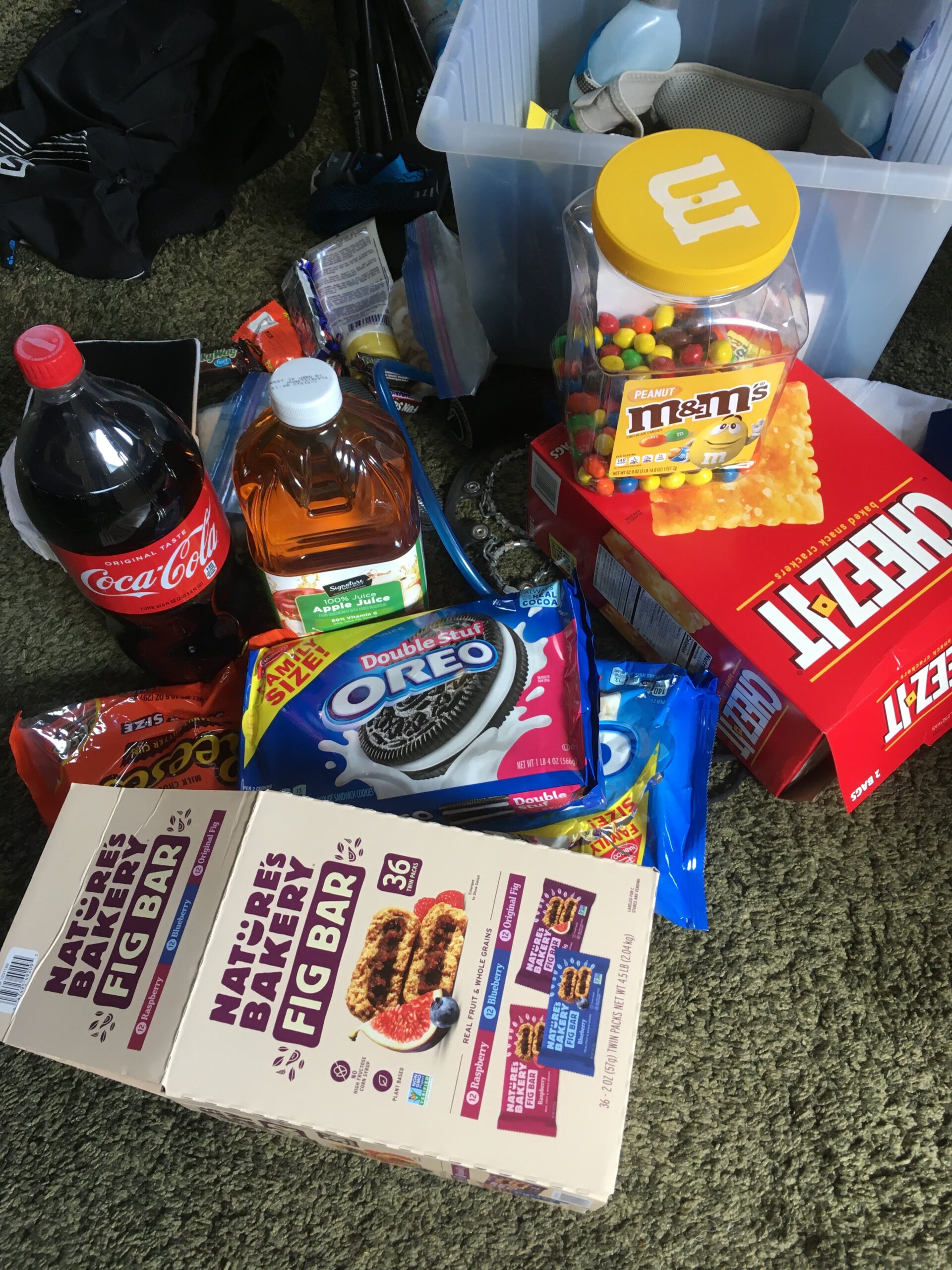
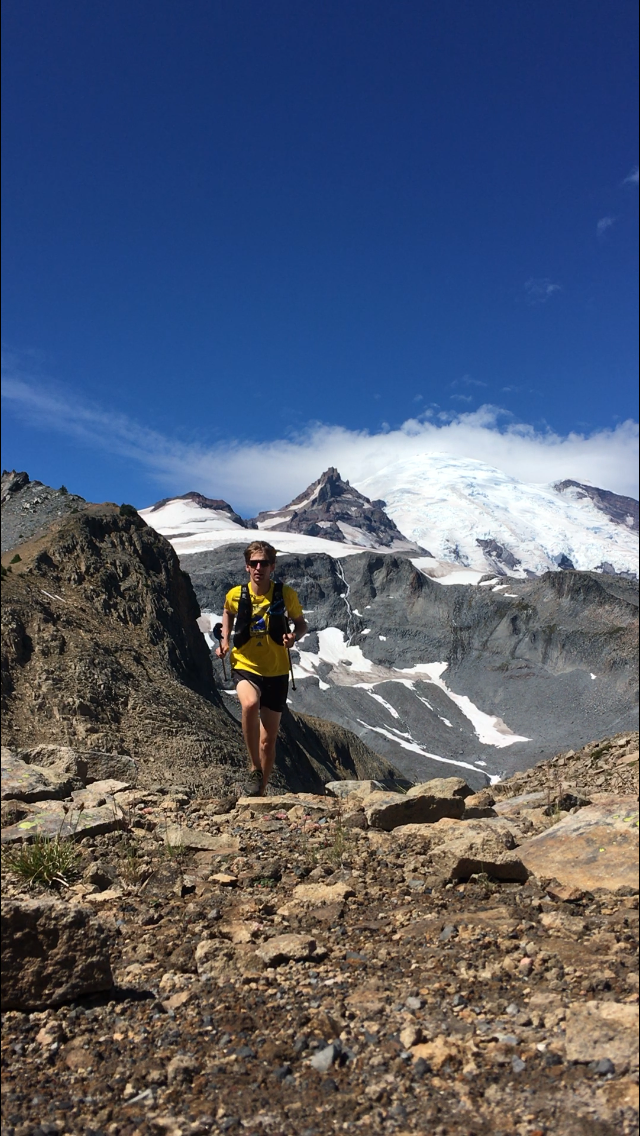
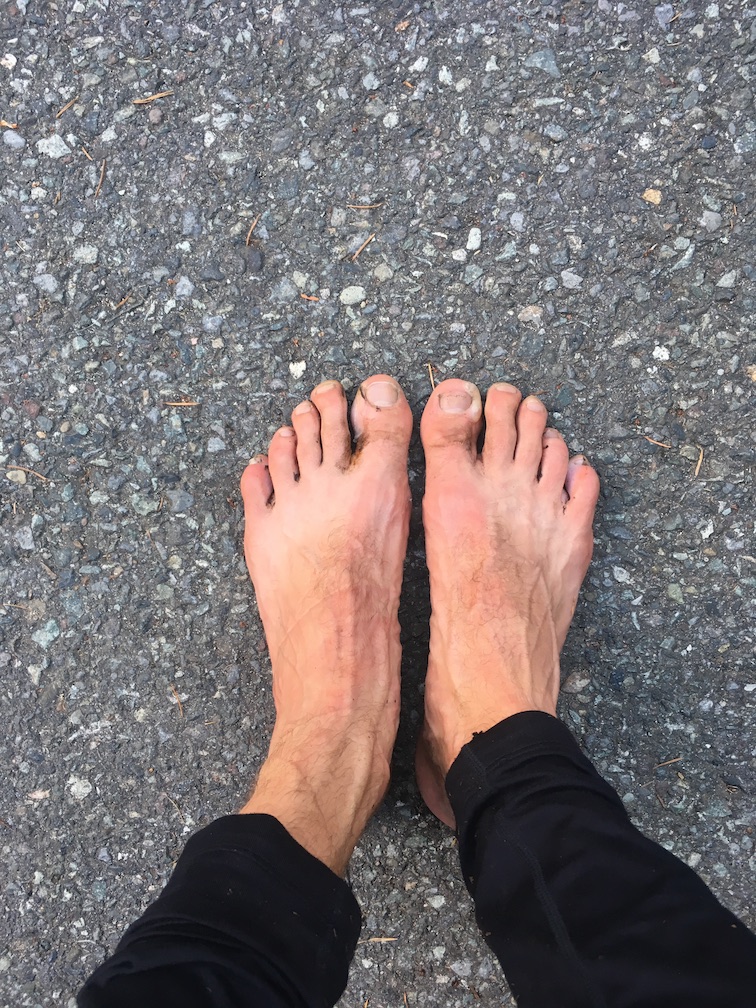
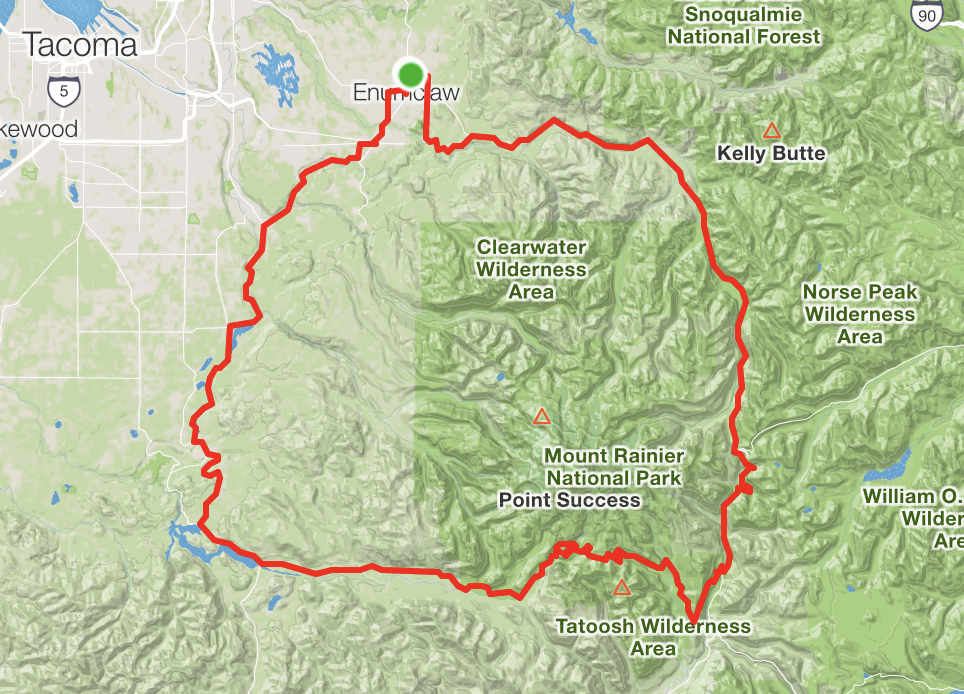
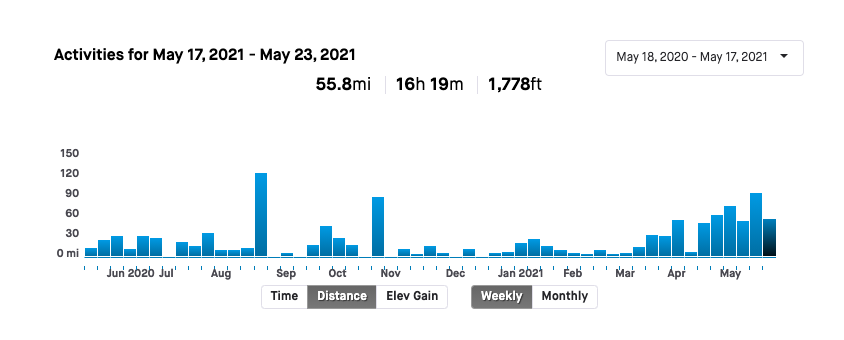
2 thoughts on “How I Plan To Run 100 Miles Training Three Days A Week”